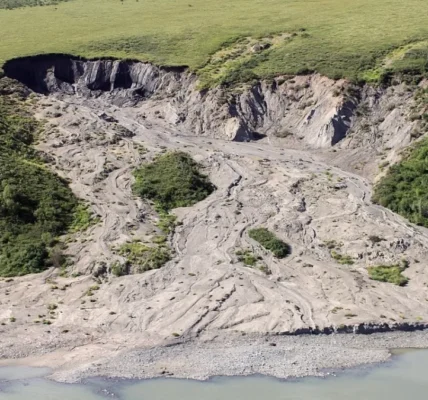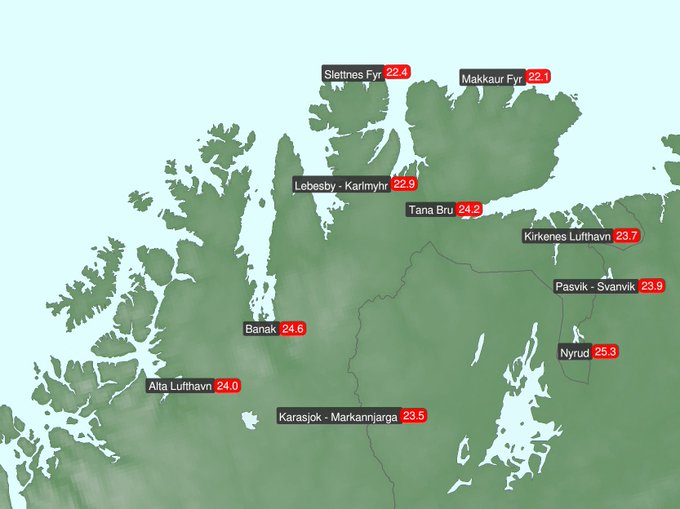As the planet continues to warm, not all regions are heating up at the same pace. Over the last thirty years, the global average temperature has increased by around 0.26°C per decade. But in Europe and the Arctic, the rate of warming is more than double the global average. Let’s have a closer look at what our data say.
According to the ERA5 dataset of the Copernicus Climate Change Service (C3S)*, Europe is the fastest-warming continent and has warmed by approximately 0.53°C per decade since the mid-1990s, and the Arctic is warming even faster—around 0.69°C per decade.
Compared to pre-industrial levels (averaging the estimated 1850-1900 temperatures), the global average temperature has increased by around 1.3°C, according to the C3S Climate Indicator for temperature, which is based on the latest five-year averages. The Paris Agreement aims to hold the increase in global average temperature to well below 2°C above pre-industrial levels and preferably below 1.5°C. The latest update of our C3S Global Temperature Trend Monitor suggests that if the latest 30-year warming trend continued, we could reach 1.5°C by April 2029. For Europe, the increase since pre-industrial levels is around 2.4°C, and in the Arctic, it’s even higher at 3.3°C.
Why does the rate of warming vary around the globe?
While the long-term rise in global average temperature is mainly caused by the increase in global greenhouse gas emissions, the uneven rate of warming around the globe is influenced by a combination of factors: land areas warm faster than oceans due to the ocean’s higher heat-absorbing capacity, and changes in wind patterns and atmospheric circulation patterns can lead to regional differences. Air quality can also have an impact. For example, in areas with more air pollution, higher amounts of atmospheric aerosols reduce the amount of solar radiation that reaches the surface. This can partially offset the warming caused by increased greenhouse gases.
Why is Europe the fastest warming continent?
Europe is currently the fastest-warming continent. Since the 1980s, Europe’s warming has outpaced the global average by a factor of two. Several factors explain this trend:
- Changing weather patterns: Shifts in atmospheric circulation favour more frequent and more intense summer heatwaves in Europe. The latest European State of the Climate report highlighted that the number of heat stress days is increasing in Europe, with 2024 seeing the second-highest number on record. The start of summer 2025 has already seen heatwaves across much of Europe.
- Reduced air pollution: In the past, aerosol emissions in Europe had the effect of reducing the amount of solar radiation reaching the surface. Since the 1980s, stricter air quality regulations have reduced these emissions across Europe. As a result, more solar radiation is reaching the surface, and cloud cover is also reduced, both contributing to faster regional warming.
- Geography: Parts of Europe extend into the Arctic —the fastest-warming region on Earth.
2024 maps heat stress days / tropical nights

Number of days with at least ‘strong heat stress’ in 2024, and associated anomalies, relative to the average for the 1991–2020 reference period. A day with ‘strong heat stress’ has a maximum feels-like temperature, based on the Universal Thermal Climate Index (UTCI), of at least 32°C. Data: ERA5-HEAT. Credit: C3S/ECMWF.
Arctic Amplification: A Runaway Feedback Loop
The Arctic’s rapid warming—exceeding the global average by far—is a phenomenon known as Arctic amplification. This is driven by several interconnected processes:
- Albedo feedback: As the climate warms and snow and ice melt, they reveal darker surfaces underneath, such as ocean water or bare ground, which absorb more solar energy. This accelerates the warming and leads to further melting—a classic feedback loop.
- Convection differences: In the tropics, strong convection (warm air rising and mixing into the atmosphere) distributes heat vertically. But the Arctic experiences very little convection due to the weaker heat from the Sun, so the heat remains trapped near the surface.
- Lapse rate feedback: In cold regions like the Arctic, the air near the ground warms much faster than the air higher in the atmosphere, trapping heat near the surface, and further accelerating the warming.
- Water vapour transport: Atmospheric circulation patterns move warm, moist air from the tropics towards the poles. Since a warmer atmosphere can hold more moisture, the amount of water vapour transported to the poles is expected to increase with climate change, further intensifying Arctic warming.

Annual average surface air temperature anomalies (°C) from 1979–2024, relative to the average for the 1991–2020 reference period, for the Arctic as a whole (66.6°–90°N) (left) and over all Arctic land areas (right).
Is it getting cooler somewhere on the planet?
While Europe and the Arctic are warming faster than most other regions, almost all land areas are experiencing temperature increases, though the rate varies. The fastest warming is observed in northern high latitudes, particularly the Arctic, central and eastern Europe, and the Middle East. The continents are also warming faster than the ocean. While temperatures over the ocean are generally also warming, parts of the northern North Atlantic—often called the North Atlantic ‘warming hole’ or ‘cold blob’— the eastern South Pacific, and the Southern Ocean show some localised cooling.

Trendin annual surface air temperature (°C/decade) for 1995–2024. Data source: ERA5. Credit: C3S/ECMWF.
Ultimately, while the physics of global warming are straightforward—greenhouse gases trap heat—the rate of warming in different regions is shaped by complex local feedbacks, atmospheric dynamics, and air quality. Understanding these regional differences is essential not only for scientific accuracy but for shaping local adaptation strategies in the face of a warming world.
*ECMWF implements the Copernicus Climate Change Service (C3S) on behalf of the European Commission




